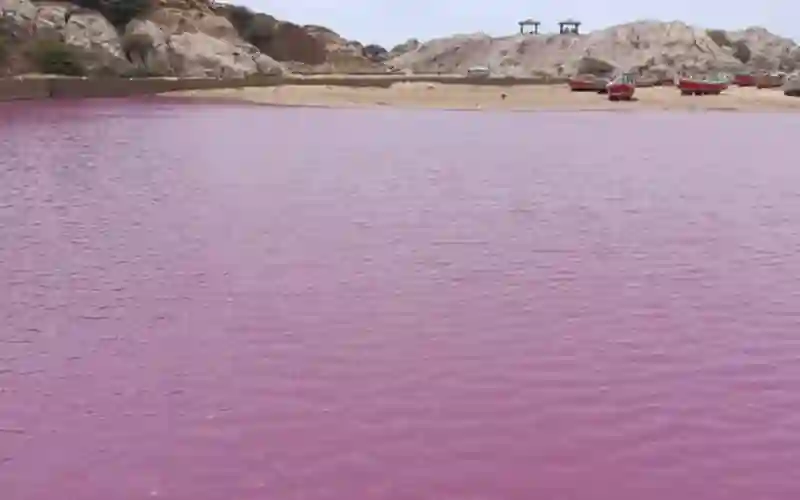The National Institute of Maritime Affairs (NIMA) has warned of health risks after seawater at Gadani Jetty turned pink, foul-smelling, and toxic due to a rare phenomenon.
The once-blue lagoon has now become a stagnant, contaminated water body, with scientists linking the change to a “pink tide” – a bloom of pigment-producing microorganisms, such as halophilic bacteria and algae.
NIMA confirmed this is Pakistan’s third recorded incident, after occurrences near Karachi in 2017 and Makran coast in 2021.
Following media reports, NIMA dispatched its Karachi-based team for an on-site investigation. Samples revealed seawater temperature at 36.5°C, salinity at 48 PPT, and turbidity at 47 NTU – all significantly above normal.
READ: What’s reason behind Gadani Jetty’s pink water? Investigation report released
Nutrient levels, including ammonium and phosphate, were also alarmingly high, fostering excessive bacterial and algal growth.
The study found that the jetty’s faulty design restricts water circulation, creating a nutrient-rich, warm, and saline environment ideal for the bloom. Dead fish were observed, indicating potential marine life fatalities.
NIMA warned that harmful algal blooms (HABs) can cause skin irritation, contaminate seafood, and pose health hazards. Locals and visitors have been urged to avoid direct contact with the water and refrain from consuming seafood from the affected zone until safety is confirmed.
President NIMA Vice Admiral Ahmed Saeed (Retd) has called on the Balochistan Environmental Protection Agency to enforce safety protocols and redesign the jetty to improve water flow.
He stressed prioritizing the safety of coastal communities and preserving marine ecosystems at provincial and national levels.









